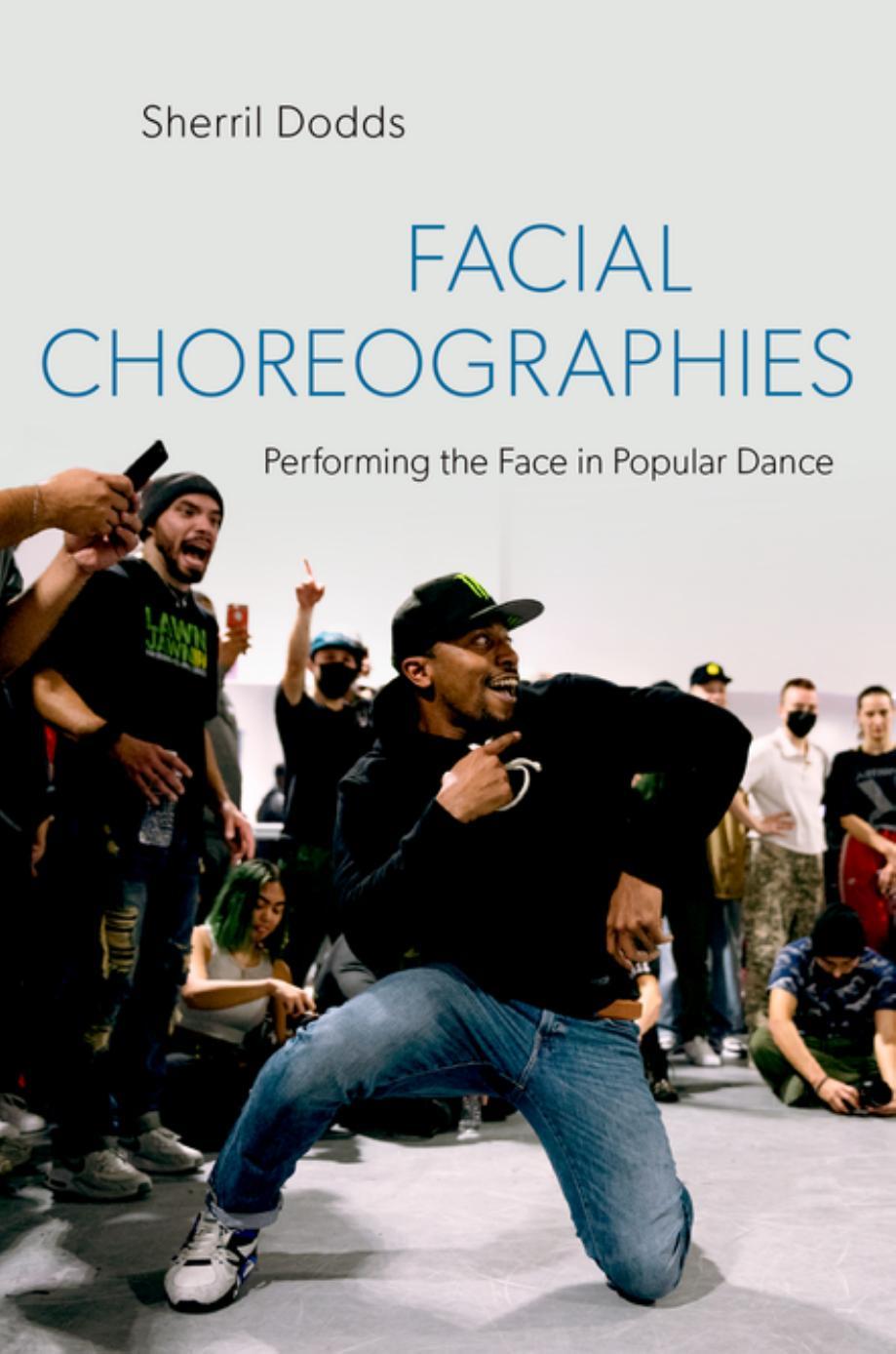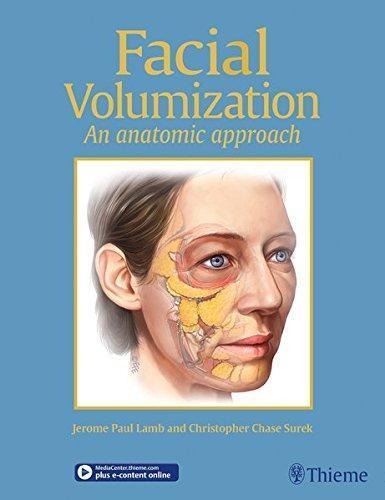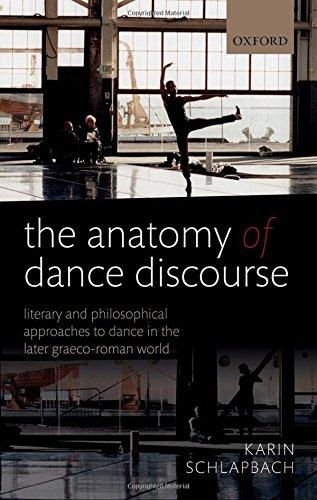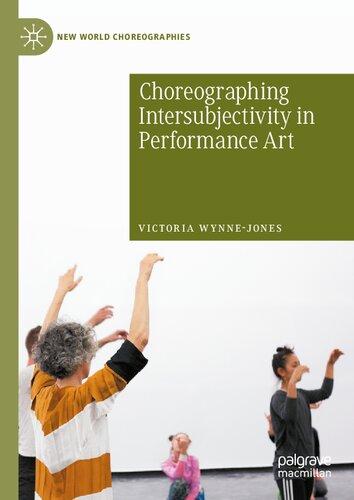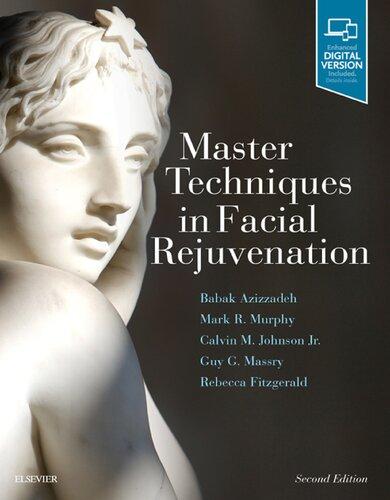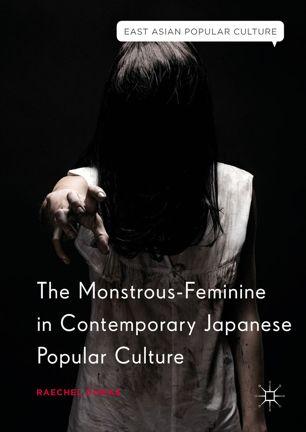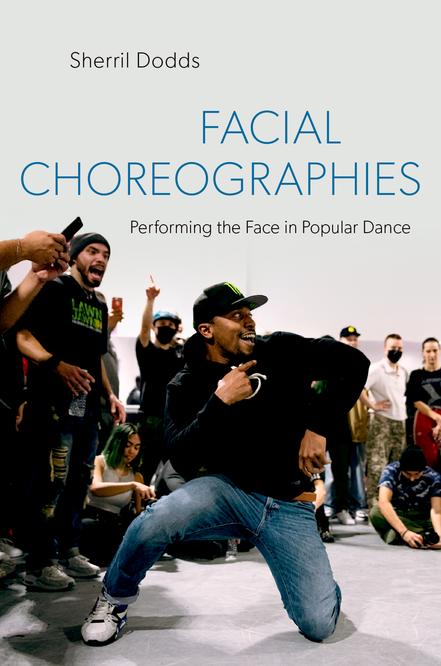1 About Face
If it moves, it can dance. So you got lots of muscles, if I’m not mistaken, in your face. Dance! Dance in your face.
Professor Lock1
Without doubt, dancers and audiences are attentive to the expressive capacity of the face. As the opening quotation shows, hip hop dancer Professor Lock encourages performers to employ facial expression as a dance in and of itself. Indeed, I recall the deluge of facial expressions issued by Professor Lock and other dancers at hip hop battles, parties, and jams I have attended in Philadelphia over the past ten years: the lockers who exude wide openmouthed smiles and flash their tongues in a cheeky moment of play; the poppers whose steely expressions and facial grimaces capture the tensing of their muscles as they hit in time to the beat; and the poker-faced b-boys and b-girls who stare down their opponents in an intimidating dance of oneupmanship at the beginning of a round (Dodds 2016).
Notably, other observers have also paid attention to the expressivity of the face in dance. Dance critic Wendy Perron (2002, 6) details the facial idiosyncrasies of celebrated American concert dance performers, such as the “sad but brave visage” of ballerina Gelsey Kirkland, the “sensual and glamorous face” of modern dancer Katherine Dunham, and the “hint of agitation” evident in the face of postmodern choreographer Lucinda Childs. Turning to India, dance scholar Uttara Coorlawala (2010) describes the classical form of Koodiyattam, in which the performer, with an elaborately decorated face, sits and narrates through expressive hand and eye gestures. Recounting a performance of Ramayana, Coorlawala (2010, 126) notes how “the eyelids would quiver in synchrony with the percussive rhythms of the accompanying orchestra,” and “at different times the eyebrows and lips also ‘danced’ in this rhythmic way.”
In the area of popular dance, several scholars observe how the face works almost excessively to portray ideas about the dance and the people engaged
Facial Choreographies. Sherril Dodds, Oxford University Press. © Oxford University Press 2024. DOI: 10.1093/oso/9780197620366.003.0001
in its performance: in female striptease, dancers pout, purse, and lick the lips as part of their seductive repertoire (Liepe-Levinson 2002); in competition tango, a serene countenance or clenched jaw reveals the physical and emotional sensations of this intimate partner dance (McMains 2019); and in studio dance competitions, young participants enact melodramatic facial expressions (Guarino 2014). It appears that the face in popular dance performance creates a visual spectacle above and beyond modes of expression typically employed in habitual life. I see this in a range of popular dancing faces: the saucy glances, knowing winks, and looks of outrage that I witnessed on the neo-burlesque stage (Dodds 2011, 2014); the perpetually clenched smiles of the young competition dancers who feature on the reality television show Dance Moms; and the agitated frowning, biting and snarling actions that characterize the music video performances of Michael Jackson at the height of his career.2
Yet despite this acknowledgment that the face offers an important contribution to dance performance, the dancing face has not been fully examined within the field of dance studies. This oversight seems odd given that within a Western paradigm at least, the face occupies such social and physiological significance in everyday life (Coates 2012; Perrett 2010). We look to the face as a unique identifier that differentiates one person from another, and we read facial expression to comprehend what and how people feel. In this book I pursue the pressing research questions of what the face does in dance and what it might mean. I start from the position that a “dancing face” forms a vital component of dance performance, and it can be set in motion or fixed in stillness according to different traditions. I focus specifically on the face within popular dance performance as it permits the face to be one of excess, spectacle, and exaggeration, as well as disclosure or deception. Indeed, popular dance often calls upon facial expressions and actions that are commonplace in quotidian life, such as a smile, frown, or glance, but then remain stuck upon the face, overstated through a corporeal hyperbole, or presented in such rapid succession that they are rendered peculiar to or outside the norms of everyday social interaction. As different facial modalities are aligned with specific dance genres and styles, the dancing face is not simply random or erratic, but is purposeful, rehearsed, and choreographic. The design of the dancing face is intentional and practiced across diverse movement idioms, thus it conveys ideas, values, and meanings embedded within the social and aesthetic fabric to which it belongs. Furthermore, if the face can reveal meanings, it can also comment upon and resist them depending
upon its compositional attitude. This is where my fascination lies: facial choreography that can provoke and critique.
To explore the organization of the face across various popular dance forms and to mine its interpretive possibilities, in this introduction I set out my preliminary thinking about the face, before moving on to outline the focus and scope of the research. I have titled the introduction “About Face” as an intentional double play: I both consider what various disciplines can tell us “about the face” and I take the idiomatic expression “about-face” to position some of my ideas in opposition to prior assumptions. In the first section, I turn to performance scholarship, examining the face across various art practices, and then speculating as to why the face has failed to receive serious scholarly attention within dance studies. Here I assert that although some dance forms foster a relatively disengaged face, others positively call attention to the visage, and therefore provide a rich area of insight. It is this latter group that forms the focus of this study. The absence of existing scholarship on the face in dance studies leads me to develop an interdisciplinary methodology, predominantly rooted in cultural theory, which supports my attention to dancing faces situated within the domain of popular cultural production. In the second section, I explore the prominence of the face in daily life, and the breadth of scholarship that addresses its expressions, representations, functions, sensations, and interactions. I identify five critical strands across this literature that offer frameworks through which to analyze the face, yet I also note the limitations of many of these approaches and where I hope to make interventions in response. In the final section, I return to the subject of popular dance performance where I emphasize the complexity of the choreographic as purposefully devised movement to suggest that the dancing face can stage a mode of critical work that the face in everyday life has less opportunity to exploit. Here, I introduce the three case studies for my facial analysis: global celebrity Michael Jackson, the dancing child star Maddie Ziegler, and my local community of hip hop dancers.
The Face in Performance
In much the same way that dance employs a range of facial compositions and attitudes according to the codes and conventions of diverse aesthetic paradigms, the expressivity and behavior of the face also adapts to specific theatrical and musical traditions (Auslander 2006; Schechner 1988). For
instance, in some dramatic forms, such as Japanese Noh theater, Greek theater, and the Italian Commedia dell’arte, the quotidian face is masked or disguised, allowing the performer to express emotions through the body or take on other identities. Within the Euro-American realist or naturalist theater tradition, the actor’s face forms a dramatic rendering of the character’s interior psyche.3 And in the Western music idiom, performance scholar Phillip Auslander (2006) compares the facial contortions of opera singer Luciano Pavarotti and the facial attitudes of heavy rock guitarists to show how they are less a direct expression of individual personality, and instead are idealized performance values shaped by the artist, audience, and aesthetic genre.
In particular, the face on screen has attracted significant scholarly interest. As film scholar Noa Steimatsky (2017, 1) observes, “the human face is already, itself, a moving image,” and the screen media can radically transform how faces are seen and thereby understood. Steimatsky (2017) conceives the cinematic face as a dispositif, in the sense that it reveals a specific disposition constituted through the filmic apparatus, modes of seeing, its performance attitude, and modalities of understanding. Consequently, the face is not simply a framed object but a “critical lens” that embodies a theoretical point of view (Steimatsky 2017, 3). While I examine both live faces and screen faces within this book, I show how the choreographic possibilities of the face in popular performance can also adopt a critical attitude toward the very countenance it occupies and resist the social and aesthetic boundaries that seek to delimit its potential.
In reference to the cinematic image, several scholars have examined the relationship between the close-up shot and the face. Steimatsky (2017) asserts that the face was discovered anew through the birth of cinema, and film writer B éla Balázs made the historical observation that the magnified facial close-up on the film screen created new forms of perception (Davis 2004). Dance scholar Erin Brannigan describes close-up movement of the face as “decentralized micro-choreographies” (2011, 44, emphasis in original), which returns to Professor Lock’s idea that the mobility of the face can be viewed as a dance in and of itself. Indeed, several screen choreographies exist that consist entirely of a facial dance, and I examine one such example (the pop music video for “Big Girls Cry” featuring Maddie Ziegler) later in the book.4 That said, as I will shortly argue, the analysis of the face needs to be considered in relationship to the entire dancing body.
To return to the cinematic screen, another conception of the face views it in terms of a mask. Although an idea already exists that the face itself masks an interior self, the film screen behaves as a celluloid mask, producing a spatio-temporal distance between actors’ faces and cinema spectators (Coates 2012). In his essay “Garbo’s Face,” literary scholar Roland Barthes (1973, 62) captures this disjunction between presence and absence in his analysis of film star Greta Garbo: on the one hand, he conceives her face on screen as an “absolute state of the flesh” in recognition of its mortal corporeality, but on the other as a divine and ephemeral “archetype of the human face” that cannot be accessed.
Whereas the cinema screen produces distance between performer and spectator, the television screen engenders proximity. Unlike the remote celebrity of film stars, the talking head of the television screen represents a quotidian and mundane image, with its glut of familiar faces that are scripted through the narratives of the small screen (Davis 2004). Communications scholar Paul Frosh (2009, 92) suggests that the headshot represents the most common image on television: the direct address between the presenter and home viewer produces an intimacy that “helps train us in the subliminal art of face-reading.” Although the devices spectators use to engage with screens have extended beyond movie theaters and domestic television sets to personal computers, tablets, and smart phones, the face continues to occupy a central position across these platforms as the close-up image captures both its affective capacity as an expressive medium and its communicational function as a site of speech.
Given the degree to which the face operates across dance, theater, music, and screen performances, I am mindful of the limited attention awarded to the face within the field of dance studies. I therefore turn to dance scholarship and criticism to examine how it has dealt with the face in performance. I do not aim to provide a comprehensive cross-cultural history of the dancing face, but rather to show how the face has been perceived by specialist dance commentators.
The origins of ballet in the Renaissance court dancing of Europe lay important historical grounding regarding social values relating to the head and face, which can be traced through to the bodily aesthetics of ballet. Historian Georges Vigarello (1989) describes how the courtly nobility of the sixteenth century privileged a straight back and upright head as an indicator of morality and civility, and the body could be trained to achieve this desired vertical
posture through the noble activities of fencing, riding, and dancing. The values of an erect head and vertical plane formed the aesthetic foundations of Renaissance court dancing (Foster 1986), and an externalized presentation of an upright body that “faces” and rotates out toward the spectator continued with the development of ballet (Rameau 1728; Stokes 1983; Volinsky 1983). Notably, the face played an important role in this evolution. Although the detail of its composition and intention is not fully fleshed out, French dancer and ballet master Jean-Georges Noverre espoused the expressive character of the face in eighteenth-century ballet-pantomime (Nye 2009), and Italian ballet teacher and author Carlo Blassis (1888, 531) emphasized the importance of the face in nineteenth-century technique manuals: “All our gestures are purely automatal, and signify nothing if the face is dumb in expression.” The idea that the face invites opportunity for dancers to express complex ideas and emotions in ballet continues with twentieth-century performance. Perron (2002, 6) exemplifies this in her nuanced analysis of ballet dancers as she speaks of “wide-eyed” Angel Corella, who “looks pumped”; Damian Woetzel, who displays a “sly poker face”; and Darci Kistler with “lips parted as though ready to swoon for the sheer love of dancing.”
Yet this emphasis on facial expressivity recedes with the advent of twentieth-century modern dance. The external and erect presentation of the head and face that characterized ballet was firmly challenged through modern dance and its critique of the hierarchical organization of the body. Ballet advocate Lincoln Kirstein describes how modern dance responded to gravitational pull over the aerial ideal, and that its focus dwells “on and in central somatic areas of the body, rather than extension of peripheries” (1983, 240). Thus the head and face carried less import than the entire body, which became a universal expression of ideas that interested the innovators of modern dance. I also note here the impact of nineteenth-century French acting coach François Delsarte on early modern dance. Delsarte’s codified system drew a correlation between certain psychological traits and emotional states in relation to specific facial expressions and bodily gestures, thus projecting that each movement signified a particular meaning (Ruyter 1996). American Delsartism, which was developed by early modern dancer Genevieve Stebbins and attracted the interest of other pioneers such as Isadora Duncan, Ruth St. Denis, and Ted Shawn, not only demonstrates a connection between acting and dance, but also supports the universalism that characterized twentieth-century modernism (Ruyter 1996). In reference to Stebbins, literature scholar Carrie J. Preston (2011) explains that the idea
of a facial expression depicting an individual self was replaced by the masklike quality of a universal type. Along similar lines, Perron (2002, 6) details the desire of modern dance choreographer Martha Graham to universalize human experience: “Graham’s artistic aim was the stylization of human emotion. Her face, with angles and planes framing her all-knowing eyes, seemed to embody modernism.”
Whereas modern dance centers on universal modes of representation, attention to the face as an expressive individual entity disappears even more with the development of postmodern dance in the 1960s, and its critique of authorship. In considering the work of dance artist Trisha Brown, dance scholar Jeroen Fabius (2015) explains that postmodern dance assumed a calm and neutral demeanor, therefore the facial gaze and orientation were considered impersonal or dehumanized; and in reference to Yvonne Rainer’s seminal postmodern dance Trio A, dance scholar Sally Banes (1987, 64) describes how a sense of the personal recedes into a “withdrawn face.” Thus dance scholars and critics perceive a major shift from the expressive face developed in eighteenth- and nineteenth-century ballet to the so-called neutral or disengaged face of postmodern dance. I would question these generic expressions to some extent, as I suspect that individual performances of specific works demonstrate far greater diversity of facial expression than perhaps suggested. Nevertheless, these periodizing and generic understandings of the face go some way to explaining why the face has been largely ignored in dance studies. The initial development of the field was dominated by Euro-American scholarship (Giersdorf 2009), and its teaching and research centered on the canon of modern and postmodern dance (Franko 2014). Consequently, as its focus was directed to the integrated body-self as the epitome of style, scholars showed little concern over a face that refused to draw attention to itself. It is here, however, that I intervene with an about-face maneuver. While some scholars argue that the face disappears into a fullbodied expressiveness within the field of “contemporary dance” (Brannigan 2011; Davies 2007; Lepecki 2007), this position overlooks the deployment of the face in other dance genres, which fully engage with the performer’s countenance and mine its choreographic potential.
Indian classical dance offers a rich case study, in which dancers are schooled in elaborate facial movements that express specific aesthetic meanings (Bharata-Muni [1951] 1967; Bose 1970). The term rasa describes the aesthetic moods or emotional states expressed through facial and gestural actions, and these comprise the abhinaya or storytelling component
of the dance (Chatterjee and Ling 2012; Devi [1972] 1990). Indeed, facial features are considered minor limbs, known as upāngas, and gestures of the face are named mukhaja (Vatsyayan 1967). Various glossaries and training manuals provide detailed instructions regarding the direction or positioning of the head, neck, eyes, eyebrows, nose, mouth, lips, teeth, tongue, and chin to convey specific characterization and emotion (BharataMuni [1951] 1967; Bose 1970). The eyes express the eight rasa, and in a technique such as Kathakali, dancers train over many years to perform the Nritta Drishti or “dance of the eyes.”5 In her study of Kathak, dance scholar Pallabi Chakravorty (2008) notes that unlike the objectifying Western gaze, which assumes a distance between the observer and observed, in Kathak dance, seeing embraces gazing, knowing, and touching, such that it creates an awakening of rasa within the spectator. Hence the visual produces a reciprocal sense of touch between dancer and observer. Although facial expression was already important to the classical Indian forms, dance scholar Janet O’Shea (2007) notes that bharata natyam dancers moved from a naturalistic to theatrical style of expression in the twentieth century as the dance entered proscenium-style concert venues. These large-scale theaters meant that dancers “amplified the facial expressions of the abhinaya . . . with the aim of rendering the expressions legible” (O’Shea 2007, 27). Evidently, ways of performing and conceiving the face are culturally and historically variable, an idea that I return to throughout the book.
In directing attention to the face, I similarly note the ubiquity of mask performances that appear widely across the African continent (Belting 2017; Glass 2007; Welsh 2004).6 In some instances the face is painted and in others the face is covered with an actual mask, but in both cases the facial disguise serves to conceal the identity of the performer (Okafor 1991; Welsh 2004).7 When a performer puts on a mask, they undergo a process of transformation as it awards them with supernatural qualities that summon a spirit or deity, and their movement reflects the specific character of the mask (Glass 2007; Okafor 1991). For instance, the West African Yoruba mask tradition of Gelede presents an aesthetic ritual that pays respect to women in anticipation that the entire community might benefit from their power.8 Although the masquerade is performed entirely by men, the costumes, masks, and movement can be female, and the dance component brings ase, a vital power or life force, into being (Drewal and Drewal 1983). Ideas of masking extend to dances of the African diaspora, and dance scholar Thomas DeFrantz applies this idea to describe the “aesthetic of the cool” exhibited in hip hop dance.9
Drawing on a heritage of African aesthetics, he delineates how a cool and composed countenance, which he refers to as an “inscrutable facial mask,” redirects attention to the heat, energy, and vitality of the body in motion (DeFrantz 2004, 72).
Although the Indian classical forms and African masking are two obvious examples of dance practices that explicitly call attention to the face, I also think of the distinctive countenance in the Japanese form of Butoh and in the Haka dances of the Māori people of New Zealand. It strikes me as ironic that within Western culture the face emanates such value and power, yet within the idioms of Euro-American modern and postmodern dance, its expressive capacity has almost disappeared. This embodied tactic perhaps serves to distance the face of Western concert dance from the overt signaling of the face within non-Western genres, such as the examples I describe above. It indicates an exercise in whitening in which the universal visage of modern dance and the withdrawn face of postmodern dance project a racial separation from “Other” dance styles that consciously work with the face.10 This racialization of the face might then explain why dance studies scholarship has been slow to examine the dancing face as its own colonialist investments placed white European forms at the center of its teaching and research (Dodds 2019a).
The same strategic distancing occurs in relation to popular dance. As I discuss earlier in the introduction, the face in popular dance tends to explore a broad expressive capacity and, not surprisingly, it frequently originates from communities of color and has historically been positioned as low culture in relation to the high of Western concert dance (Dodds 2011). Yet although these categories of high versus popular culture, or Western versus non-Western dance are operational terms, I do not intend to further reify them though my study of the face. The facial expressions that I examine in this book might appear across many dance genres as well as in everyday life. My interest here, however, is how they are deployed in each instance and to what effect. That I focus on an area termed “popular dance” reflects both my personal interests and research expertise. Thus, as I continue to apply this term, I try to resist locking certain expressions into specific dance idioms. I hope that the ways in which I speak about the dancing face might provide templates for examining the dancing face across other genres and styles. Indeed, some of my discussion centers on how habitual faces intersect with and depart from dancing faces that feature in an area I conceive as “popular presentational dance” through intentional choreographic strategies.
While dancing in social contexts for recreational purposes might typically engage faces more akin to those of everyday life, in popular dance that emphasizes a presentational component, the face works to its full potential across a spectrum of expressions. Here I refer to popular dance performances, situated on stage and screen or in vernacular contexts, that assume the presence of a spectator, whether that constitutes a separate audience or fellow dancers who watch. For instance, vernacular dance competitions, pop music videos, Broadway musicals, Las Vegas dance spectacles, cruise ship entertainment, hip hop battles, and reality television shows spring to mind as popular performance sites in which the face might exceed the kinds of expressions that characterize life in the common public sphere. Indeed, in comparison to the relatively still and understated facial expressions that have typified modern and postmodern dance, the face becomes positively hyperbolic and hypermobile in presentational popular dance. I therefore look specifically at popular performance to examine the actions, meanings, and sensations of the face, and how it eclipses the norms of the face in everyday life.
Performing the Habitual Face
Composed of bone, muscle, skin, and hair, the face occupies the frontal region of the head, and we come to recognize it through its eyes, brow, mouth, cheeks, ears, nose, and chin. Together, the head and face constitute a specialized area of the body that contains and protects the brain, hailed within Western thinking as the central system of sensory, intellectual, and nervous activity, and they house major organs connected to visual, auditory, gustatory, and olfactory senses (Brophy 1946). The face accommodates twentytwo muscles on either side, which are attached to the skin, and when activated they render an extremely mobile surface (McNeill 1998). Indeed, the facial area seems to contain the very means of our existence as we breathe, consume, and communicate through the face.
Within the hierarchy of the body, the head holds import as a signifier of dominance and leadership. Following the classical thinking of Plato, Western philosophy has aligned the head with nobility and reason (Coates 2012; Magli 1989), hence metaphorical references to the head of the table, the household or the state delineate a position of authority and power. Regarding the face specifically, it engenders the humanist belief in the primacy of a unique self. At face value, we cling to a conception of the face as characteristic
of a singular identity with its own set of signature features (McNeill 1998). Such is the prominence of the face, it has been imagined as an index to the self (Kesner 2007), a surrogate for the entire body (Belting 2017), a mirror to the soul (Davis 2004), or even a conduit to essential character traits (Magli 1989).11 Yet the face has also been conceived as a stage (Belting 2017) or mask (Steimatsky 2017) to suggest that it performs a social version of the self rather than revealing an unfiltered display of interior thoughts and emotions. Such a perspective highlights the somewhat fuzzy line that exists between the performance of the everyday face and the face in popular dance performance.
In contrast to the face as a reflection of the individual, in other instances it delineates a powerful and immutable icon that stands for a collective body. For instance, meanings become attached to the public visage of state leaders to represent the national face of a people: Adolf Hitler as the evil face of fascism and Donald Trump as the face of an unhinged neoliberalism. Equally terrifying are the crude facial signifiers employed to index, misread, and discriminate against a broad body of people in service of a narrow political agenda. Across several Republican administrations in the United States, for example, one only has to think of the hoop earrings and gaudy make-up of the “Black welfare queen,” the dark skin and bearded face that stands in for the “Jihadi militant,” and the sweaty countenance and black moustache of the “bad hombre,” to see how facial tropes support a social and political discourse that targets some of the most vulnerable people in the nation as a threat to American sovereignty.12
Irrespective of whether faces come to represent individual or collective bodies, within Western society the face is constantly put on display. Belting (2017, 29) refers to a “facial society” to describe the excessive commodification of the face through the media, advertising, and politics, which do not showcase an idiosyncratic “natural face” but a generic “blank facial formula.” This cultural saturation of the face has been further heightened with the development of the smart phone and its facility for “selfie” portraits. Selfies quickly dominated the social media networks, such as the apt-named Facebook, that gained rapid popularity in the early twenty-first century. Yet the import of the face extends beyond its excessive representation into an entire arena of labor described as “facework” (Domenici and Littlejohn 2006). Facework concerns the effective communication practices required to “build, maintain, protect, or threaten personal dignity, honor, and respect” that people deploy across their personal relationships and professional interactions (Domenici and Littlejohn 2006, 7).
Given the primacy and presence of the face across the public and private sphere, its familiarity suggests that it cannot be taken for granted. We barely think twice about the faces that surround us. Yet in another aboutface turn, I argue that the face must be taken seriously and interrogated to understand the work it performs in the world. As indicated above, the face carries social values that invariably shape human interactions, hence my desire to know how faces act and are acted upon. Faces carry potent social meanings, and through thinking about the face in everyday life, it offers potential frameworks for examining the face in popular dance. I therefore look to a body of scholarship on the face, across the natural sciences, psychology, sociology, anthropology, philosophy, disability studies, Black studies, and feminist, postcolonial and queer theory, and Black studies theory to delineate five perspectives that each conveys the face through a specific intellectual lens. Notably, some of this literature expands beyond the face to include studies of emotion and affect. I take this necessary detour not only because of the critical debates that center on how faces express emotion or carry affective resonances, but also because the popular dancing face often stages heightened emotional qualities or provides intensely affective encounters. In conducting this literature review, although I continue to reference the five faces through the book, my intention is not to employ them as a systematic theoretical framework; rather, I show how they have shaped different understandings of the quotidian face in ways that might support or undermine my study of the dancing face.
I describe the first visage as a physiological face, which is rooted in the work of natural scientist Charles Darwin, who published his seminal study, The Expression of the Emotions in Man and Animals, in 1872.13 His work encompasses cross-cultural research on emotional expression in mammals, from which he asserts that facial responses are biologically determined and universal, but that they evolve as nerve pathways to habitualize certain movements (Mair 1975).14 Although Darwin’s work reveals methodological limitations and social biases, the impact of his thinking should not be underestimated as the idea of universal facial expressions, which reflect innate emotional states, has impacted more recent research.15 A major line of influence can be found in the work of psychologist Paul Ekman and his associated team of researchers who have published extensively on the face since the early 1970s (Ekman 1980, 2006, [1972] 2013; Ekman and Friesen [1975] 2003; Ekman, Friesen, and Ellsworth 1972; Ekman and Rosenberg 1997). Ekman (1998a) claims that humans share six common emotions (anger,
disgust, sadness, happiness, fear, and surprise), which can be read directly through facial expression.16
Despite his extensive output, Ekman’s research has been met with critique.17 It assumes a “basic emotions paradigm” in which emotions are crudely conceived as hard-wired reflexes and the face as an authentic measure of these interior states (Leys 2011, 439). His list of six universal expressions fails to account for additional emotions, such as love or jealousy, and the Euro-American terminology used does not necessarily translate crossculturally, nor recognize emotions unknown to the English-language lexicon (Neu 1987). Furthermore, multiple scholars have insisted that reading faces as isolated expressions fails to acknowledge the many ways in which they can be perceived and interpreted according to the specific contexts in which they occur (Daly 1988; Mair 1975; Niedenthal et al. 2010).18
Although situated as a separate strand of research from facial expression, the concept of affect bears close proximity to ideas of feeling and emotion and can work through the composition of the face. Within the field of psychology, feelings are defined as subjective and interior psychophysiological sensations within the realm of the natural; and, contrary to the Darwinian position, emotions are visible and identifiable feelings that are learned behaviors (Besnier 1990; Lutz 1986). Affect then describes the intensities or sensations that emerge through encounters between bodies, objects, and practices (De Laet 2017; Seigworth and Gregg 2010). Although affect theory covers a range of scholarship, one strand conveys it in terms of innate physiological drives (Seigworth and Gregg 2010). Following Darwin and Ekman, psychologist Sylvan Tomkins conceives affect in close relation to the concept of feeling: muscular and glandular reactions that emerge through the face and are dispersed through the body, and then sensed as socially appropriate or otherwise (Lutz 1985, 1986).19 Yet unlike feeling, which is personal or biographical, affects are posited as nonconscious, prelinguistic, and transsubjective states (Leys 2011). Social psychologist Margaret Wetherell (2015) comments on how affect theory overlooks a socially constituted dimension of affective experience, arguing that humans are sentient subjects steeped in reflexive social practices that place them in dialogue with others about their world experience.20
Overall, universalist, naturalist, and physiological conceptions of the face have overlooked, or at least underestimated, the role of the social in its expressive capacity. As a point of departure from this work, I move on to the second strand of literature, which I conceive in terms of a sociocultural
face. This area of research is largely indebted to the work of sociologists and anthropologists who are attentive to the role of the social in the organization of facial expression. In 1959, sociologist Erving Goffman published his seminal study The Presentation of Self in Everyday Life, which focuses on the “face-to-face interaction” that takes place between individuals, which he conceives as “performances.” Using this theatrical metaphor, Goffman describes how we might “lose face” (1959, 62) when we fail to provide an authentic presentation of the self, or how we allow our “expressive mask” (1959, 121) to drop when out of public view.
Scholars from anthropology have likewise offered important insight into the role of the social in facial expression. In a direct challenge to Darwinian thinking, the social constructionist school of thought examines emotions as learned responses that are context specific (Neu 1987).21 Scholars working from this position are critical of the way that the biological perspective places emotion within a dualistic value system, in which cognition and reason are placed in opposition to passion and irrationality: this dangerously absolves a person of responsibility regarding so-called emotional acts (Besnier 1990; Lutz and White 1986). Furthermore, anthropologist Catherine Lutz (1986) cautions that the Euro-American conception of emotion constructs normative power relations in which women, children, and racial Others are perceived as natural, chaotic, and impulsive, in contrast to rational white, male thought.22 Notably, several anthropologists have identified significant cross-cultural variance in emotional expression, both in terms of how they are conceived and articulated (Besnier 1990; Lutz 1985; Myers 1988).23 Anthropologist Ray Birdwhistell’s work also deserves consideration, specifically his 1970 text, Kinesics and Context: Essays on Body Motion Communication. Birdwhistell developed the concept of “kinesics” to examine how kinemes, discrete units of movement, express culturally specific meanings, including the action of the smile and the nod of the head.24 While I welcome his attention to the cross-cultural specificity of facial expression, his interest in units and structures of meaning privilege isolated expressions (Daly 1988), and his focus on the minutiae of anatomical organization loses the larger sense of bodily action (Farnell 1999).25
Although the field of philosophy has awarded the face surprisingly little attention, the following two conceptions of the face come directly from philosophical texts. The third approach I consider derives from Emmanuel Levinas, which I term an ethical face. A face-to-face encounter forms the central tenet of Levinas’s thinking in his book Totality and Infinity: An Essay on
Exteriority ([1961] 1969), in which he argues that subjectivity is dependent on knowing something exterior to the totality of the self. For Levinas, totality can only be surpassed through a phenomenological encounter with an “other” that opens up a world of infinity through all that is exterior to us.26 He describes how this confrontation with the face of an other disturbs the sense of self: it dismantles the totalizing position of the ego through being “faced” with another world view. The encounter is therefore an ethical one as the subject must take the “not I” into account. Yet rather than conceiving this as a hostile encounter, Levinas [1961] 1969, 197) describes a “welcome of the face” as a position of generosity as the subject becomes open to infinity and learning.27 Although Levinas provides some provocative thinking about the face and social interaction, his conception of the face-to-face encounter falls into a universalist perspective.
The fourth conception of a face that I examine, which I describe as a semiotic face, emerges partly in response to Levinas. Here I look to the work of philosopher Gilles Deleuze and psychoanalyst Félix Guattari whose chapter “Year Zero: Faciality” features in their coauthored book A Thousand Plateaus: Capitalism and Schizophrenia (1987).28 In thinking about the face, Deleuze and Guattari stage a poststructuralist intervention against the humanist subject (Davis 2004; Loh 2009). They conceive the face as a semiotic system that consists of a white wall of significance, marked by signs and their omissions, and a black hole of subjectification, which suggests a consciousness or passion that can never be accessed: “A broad face with white cheeks, a chalk face with eyes cut in for a black hole . . . The face is not an envelope exterior to the person who speaks, thinks or feels” (Deleuze and Guattari 1987, 167). Hence the face does not represent an individual self, but a delimited zone that only enables expressions that conform to prescribed signification. For Deleuze and Guattari (1987, 168), the face is rendered meaningful through an “abstract machine of faciality (visagéité),” which offers multiple permutations of expression. The abstract machine concerns semiotic systems already in place (Rushton 2002), therefore the face is coded according to social systems of knowledge and power (Loh 2009).
The social logic of the abstract machine is semiotically coded in accordance with a Western epistemology. Deleuze and Guattari (1987, 176) conceive the face as gendered and racialized in its semiotic legibility as that of a “White man.”29 They assert that faciality rejects faces that do not conform and operate normatively in relation to a binary of acceptable and deviant faces. Thus faciality is despotic and imperialist, a machine that disciplines the body
in ways that do not facilitate difference or polyvocality. Theology scholar Gavin Wittje (2015) avers that Deleuze and Guattari’s concept of faciality offers a critique of Levinas in terms of the latter’s failure to directly confront the social politics of the face. Yet unlike Levinas, Deleuze and Guattari do not consider the face within specific face-to-face encounters, which philosophy scholar Warwick Mules (2010) describes as precritical in that there is no moment in which the self becomes aware. Similarly, cultural theorist Therese Davis (2004, 30) gestures to the absence of any agency in what she perceives as the two-faced operation of faciality: although it functions like a face, with the individuality this presupposes, in actuality the body constitutes an “undifferentiated mass that gets worked on by the cultural/social machine of faciality.”
The final strand of literature I consider speaks to an identifiable face. I use this term not to suggest that stable identity markers of race, gender, sexuality, dis/ability, and age are legible through the face, but to indicate how the face is nevertheless indexed to social constructions of identity that assume a recognizable face, which can also be open to interpretation and misreading. To an extent, this can be placed in conversation with the work of Deleuze and Guattari (1987), who semiotically furnish the face through codes that delimit it as normative or deviant. In terms of the racialization of the face, I briefly note psychiatrist Frantz Fanon, whose book Black Skins, White Masks ([1952] 2008) offers a groundbreaking critique of mid-twentieth century racism. As I am mindful of American studies scholar Nicole Fleetwood’s (2011) caution over the oft-cited iteration of the Fanonian moment, suffice it to say that Fanon’s attention to an “epidermal racial schema” ([1952] 2008, 92) indicates how the face is racialized according to a hierarchy of Black and white.30 For the purposes of this book, I draw heavily on the field of Black studies to consider how ideals of whiteness fail to make purchase on faces of color and how Black aesthetics and sensibilities provide alternative epistemologies for knowing, reading, and embodying facial expression and sensation (Brown 2008; Carpenter 2014; DeFrantz 2004; Dixon Gottschild 2003; Fleetwood 2011; hooks 2015; Moten 2003; Pough et al. 2007).
The work of feminist and postcolonial scholar Sara Ahmed also offers an important framework for addressing how the face articulates identity, as well as bridging the relationship between emotion and affect. In The Cultural Politics of Emotion (2015), which was first published in 2004, Ahmed explores how emotions shape and produce relations of power between certain bodies.31 She conceives emotions as socially constituted discourses and
analyzes a range of texts about women, racial minorities, and queer bodies to analyze how emotions are invoked and put into circulation.32 Ahmed demonstrates how emotions, such as hate, fear, disgust, and love, occur through contact with objects and people and make “impressions” on us, and become sticky with affect.33 Although Ahmed ([2004] 2015) is not concerned with the face specifically, I appreciate her consideration of the political and affective work of emotions, as she details how they can fix us relationally to forms of subordination, such as the family, heterosexuality, and nation.34 In her later book, The Promise of Happiness (2010), the face receives considerably more attention in her analysis of the affective work of happiness in relation to tropes such as the feminist killjoy, the angry Black woman, and the melancholy migrant.
In addition to scholarship on race and gender, queer theory and disability studies offer robust perspectives to think about the face. Although not always addressing the face directly, their critiques of normativity help to reveal how the face works ideologically to support heteropatriarchal, capitalist, and ableist power structures. Dance and American studies scholar Clare Croft (2017, 2) argues that “queer does (rather than is)” to show how queerness works as a form of activism and therefore “queer dance” offers a critical space to imagine other ways of being. Along similar lines, English scholar Tobin Siebers (2013) asserts that able-bodiedness sets norms, yet in doing so creates exclusionary positions that occupy a site of privileged epistemological critique. He uses the concept of “complex embodiment” to explain how disability then provides theoretical knowledge that exposes the organizational structures of an ableist society. Returning to the face specifically, neuroscientist Jonathan Cole (1998) highlights the value placed on an animated face as conditions that affect or restrict facial movement, such as Parkinson’s disease, Bell’s palsy, or Moebius syndrome, appear to render the individual less of a person.
As I have demonstrated, the expressions and interactions of the face in everyday life bears the weight of a considerable body of scholarship, and this informs how I think about the face in popular dance. As a cultural theorist, I do not subscribe to the idea of a physiological face rooted in biological essentialism, although I will come to show how such ideas continue to inform popular understandings of the dancing face. Instead I am invested in the work of a sociocultural face shaped by its environment. Therefore I remain committed to the idea that the face and its interactions can only be understood within its discrete social contexts, and that the degree to which the
subject can mask, perform, or control its expressions is potentially variable. In terms of philosophical perspectives, both the ethical and semiotic face offer some assistance in my examination of the dancing face. Levinas’s attention to the encounter between faces makes sense for popular presentational dance as it is conceived with co-participation or spectator and performer in mind; and Deleuze and Guattari encourage me to look at how the face signifies according to social structures and norms, and therefore consider how the dancing face arrives on stage or in a club already socialized and saturated with existing social meanings. The identifiable face then enables me to think about how identity constructions are read through the look and expression of a face.
The Work of Facial Choreography
The beginning of the introduction asserts that the composition of the face in dance is neither random nor coincidental, but that it observes the conventions of specific dance styles and genres. This leads to the concept of a “dancing face.” Yet given that the face in everyday life also “performs” through its public presentation and communicative facework (Belting 2017; Domenici and Littlejohn 2006; Goffman 1959), how do the expressions and actions of the face in popular dance performance work differently, if at all? Indeed, I have already noted that the face in popular dance deploys some of the same expressions that occupy habitual life. The facial compositions discussed in the book are commonplace and, as isolated expressions, are relatively easy to reproduce. That said, I argue for a discernible distinction between the performance of the everyday face and the face in popular dance performance, which lies in the notion of the choreographic. As a culturally defined space in which bodies are not required to behave according to the rules of everyday life, the face in popular dance performance can exceed the expressions of a habitual face. Coupled with a dancing body, the face stands out. In all my case study examples, the dancing countenance is composed, manipulated, and deployed in ways that transgress social norms. As the book will reveal, the face in popular presentational dance performs a mode of excess: it is hyperbolic and hypermobile, and even when holding a fixed expression it works its musculature almost to a point of exhaustion. Consequently, I conceive the practiced, intentional, and somewhat experimental design of the dancing face as “facial choreography.” In this way, the popular dancing
face is distinctive. I appreciate, however, that the concept of “choreography” carries some complicated baggage.
The term “choreography” was invented by Raoul Auguste Feuillet in early eighteenth-century France to describe “the writing down of dances,” and he developed a notation system to ensure a vocabulary of dance movements could be translated to the page (Foster 2005, 87). While a parallel can be drawn between this conception of choreography and the intricate facial choreography of classical Indian dance explicated in treatises and manuals (Bharata-Muni [1951] 1967), no such written score exists for the facial compositions examined in this book. This understanding of choreographic writing overlooks oral methods of transmitting the “values, aesthetics, and actual movement traditions” of dance (Jackson 2001–2002, 44). Notably, the passing on of dance through oral means characterizes Africanist dance practices, and I have already highlighted how popular dance owes much of its repertoire to Black vernacular traditions, which are typically improvisational forms rather than set compositions. The term “choreography” has evolved as a Europeanist concept that describes the theatrical dance-making processes of singular artists (Kraut 2015), which then places value on a white compositional tradition. Consequently, popular dance scholars have critiqued this ethnocentric model. Naomi Bragin (2014) conceives the privileging of concert dance creation as a form of “choreocentricity,” which mistakenly assumes community-created dance practices or those that deploy improvisation methods, both of which pertain to popular social dance, demonstrate a lack of training, structure, and organization. Jonathan David Jackson (2001–2002, 44) also insists that the improvisational practices of Black vernacular dance are absolutely choreographic as they demand the “creative structuring, or the choreographing, of human movement in the moment of ritual performance.”
Despite this troubled understanding of the term “choreography,” I retain it as a central epistemological concept to the creation of dance. The notion of “facial choreography” asserts that the dancing face is purposeful, creative, and communicative. Unlike much of the critical literature discussed in the previous section, which bases its analysis on still images of faces (Daly 1988; Mair 1975), the book attends to the visage in motion. Consequently, I am less interested in the face as a snapshot visual signifier, in the sense of an isolated and fixed expression that can be read, than as a choreographic modality, which concerns a polysemous and diachronic face that dances. The dancing face is not only considered as a visual register of meaning, but attention also
